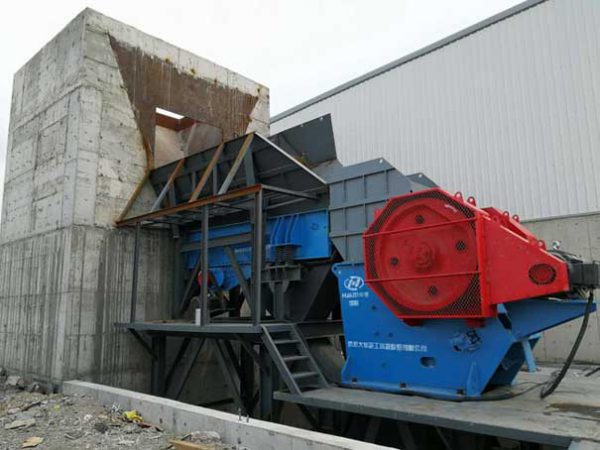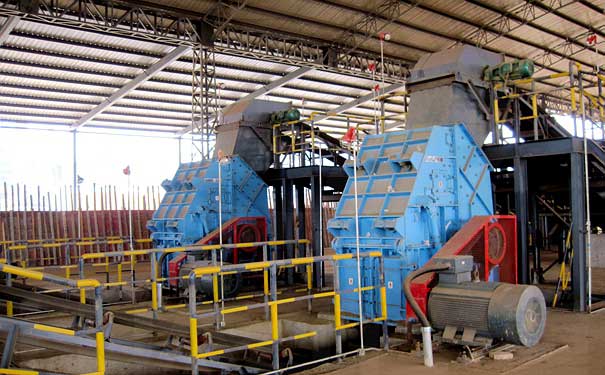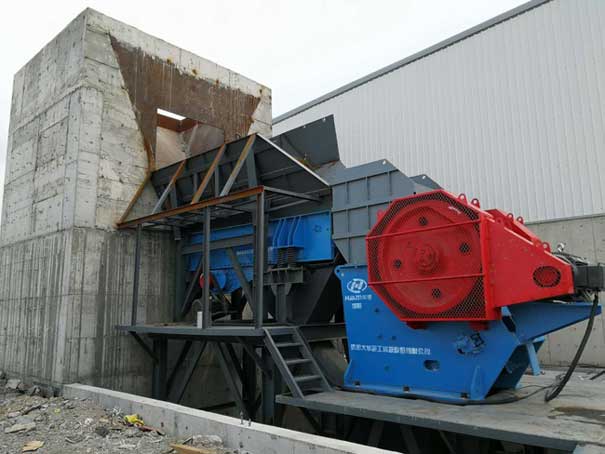Jaw crusher and hammer crusher are the more common types of crushers we use when crushing stones. We often have friends who call to ask if you want a single hammer crusher, but don’t want to use the jaw crush. Can it work? To clarify this problem, we must first understand the five major differences between jaw breaking and hammer breaking.

- Different appearance and working principle.
Friends who know these two types of equipment can be distinguished from the appearance, and the working principle is quite different. The working mode of the jaw crusher is a curved extrusion type, and the material is compressed in the crushing cavity composed of the movable jaw and the fixed jaw. Squeeze crushing; the hammer crusher is mainly crushed by the impact, shearing, tearing of the rotating hammer head, the mutual impact between the materials and the counterattack of the liner. - Different broken materials.
The jaw crusher can crush all kinds of soft and hard materials, with a compressive strength between 300-350Mpa, such as: granite, quartz stone, diabase, river pebbles, iron ore, etc.
Hammer crushers are mainly used to crush ore with low hardness, and the compressive strength is generally less than 200Mpa, such as limestone, bluestone, coal gangue, etc. The hammer head wears severely when crushing hard materials. It may cost thousands of dollars to replace a set of hammer heads. For ordinary high-manganese steel hammer heads, some need to be replaced in 2 or 3 days, which is too costly. - Different discharge adjustment methods.
The adjustment of the discharge particle size of the hammer crusher is achieved by replacing the bottom sieve plate.
There are many options for adjusting the jaw crusher, including three types: pad adjustment, wedge adjustment, and hydraulic cylinder. - Different production line configuration.
Generally speaking, the content of needles in the jaw crusher is relatively high, and it needs to be shaped with a counterattack, so we often see the configuration of jaw crusher + impact crusher.
Hammer crushers are mainly used in industrial secondary crushers. They are formed at one time and do not require secondary crushing and shaping. Therefore, they are often used in small and medium-sized production lines. - The application of sand and gravel aggregate production line is different.
Hammer crushers are rarely used in sand and gravel aggregate production lines. Although the process is simple, the yield is low, easy to be crushed, and there are many powdered materials. The finished aggregate may have micro cracks, and the compressive strength is low, which affects the aggregate quality also affects sales and prices, so it is often used as auxiliary sand making equipment.
Jaw crusher is often used as the rough crushing equipment of aggregate production line, followed by impact crushing or cone crushing, and then adding sand making machine (shaping machine) for shaping.

After understanding the 5 major differences between jaw breaking and hammer breaking, we must choose equipment according to our own needs, and we must understand our material properties and production requirements (for example, whether the requirements for the finished material are high), so as to configure the most The best production line equipment avoids subsequent production problems like the ones mentioned above.

